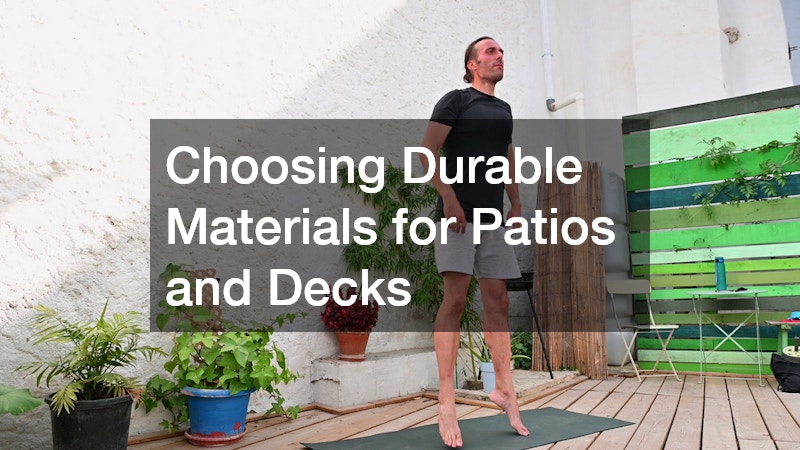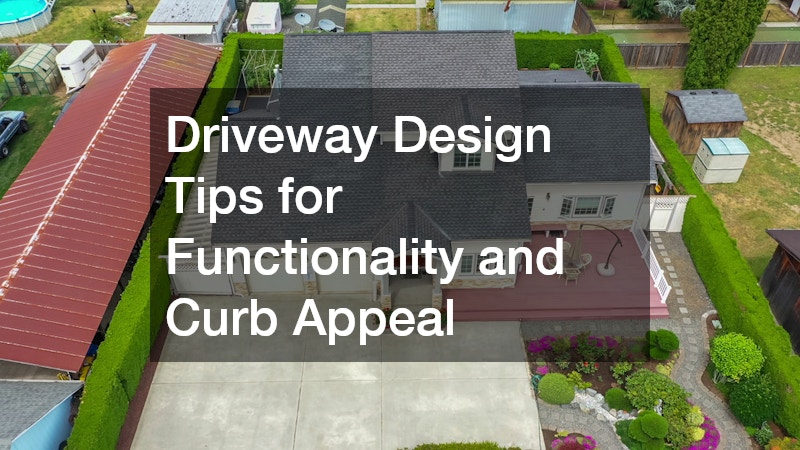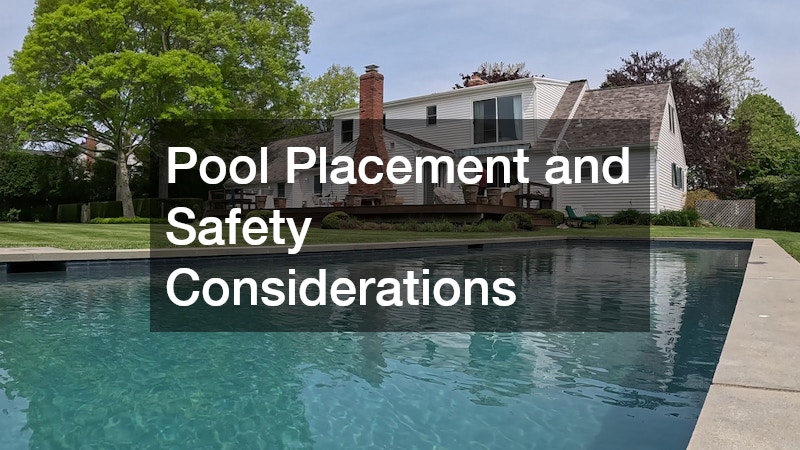Creating an outdoor space you actually want to hang out in is easier said than done. You want it to look great, feel comfortable, and still keep your home safe from damage or intruders. Luckily, with a little planning and some smart choices, you can have a backyard that’s fun, functional, and secure. From landscaping to drainage and fencing, here’s how to make your outdoor space work for you—and your home.
Understanding the Balance Between Outdoor Space and Home Protection
Making the most of your yard doesn’t mean just cramming it full of furniture or fancy features. It’s about creating a space that’s easy to use and safe at the same time. You want room to hang out, play, or entertain, without worrying about damage to your home or accidents happening.
Think of it like this: your backyard should be a fun extension of your home, not a hazard. That means paying attention to things like drainage, fencing, and placement of structures so water, pests, or wandering kids don’t cause trouble. Getting this balance right will let you enjoy your outdoor space without constant stress.
1. Planning Your Outdoor Layout for Maximum Usability
Before buying anything or digging a hole, take some time to map out your space. Ask yourself how you plan to use it. Will it be a chill zone for morning coffee, a playground for the kids, or a party spot for friends? Once you know that, you can figure out where things go.
-
Sketch your yard on paper or use an app to visualize furniture, play areas, and garden spots.
-
Leave clear paths for walking and emergency access.
-
Think about focal points like trees or views and design around them.
The key is to avoid a cluttered yard. When everything has a spot and you can move around easily, the space feels bigger, safer, and just more inviting.
2. Choosing Durable Materials for Patios and Decks

Patios and decks are often the heart of backyard life—the place where friends gather, kids play, and families enjoy meals outside. If you want your outdoor hangout to last for years, choosing the right materials is crucial. Not only do they need to look good, but they also have to withstand weather, heavy foot traffic, and the occasional spilled drink. Investing in durable materials now saves you time, money, and frustration down the line.
When planning your deck, many homeowners turn to a custom deck builder to ensure every detail—from materials to design—is perfect for their space. A professional can guide you on options that are both long-lasting and visually appealing, creating a deck that complements your home and enhances your outdoor hangout experience.
Here are some of the most popular durable materials:
-
Concrete: Extremely tough and low-maintenance, concrete can be stamped, textured, or colored to suit any style. It’s ideal for patios that see heavy use and can also help reduce soil erosion near your home’s foundation.
-
Composite Decking: Made from a mix of wood fibers and recycled plastic, composite decking resists rot, insects, and warping. It’s perfect for humid climates and requires very little upkeep.
-
Natural Stone: For a high-end, timeless look, stone patios and decks offer incredible durability and can handle heavy traffic without showing wear. Materials like slate, bluestone, or granite are popular choices.
-
Pressure-Treated Wood: Affordable and sturdy, pressure-treated wood can last decades if sealed properly. It can also be customized with staining or painting to match your home’s aesthetic.
Choosing strong materials doesn’t just protect your deck—it indirectly protects your home. For example, a well-built deck can prevent soil erosion and water pooling near the foundation, while slip-resistant surfaces help keep everyone safe during rainy days. With the right materials and guidance from a custom deck builder, your patio or deck becomes more than just a surface—it becomes the centerpiece of your backyard oasis, perfect for hosting friends, relaxing with family, or simply enjoying your outdoor hangout.
3. Landscaping That Enhances Safety and Aesthetics

Landscaping isn’t just about creating a beautiful backyard—it’s a smart way to protect your home and make your outdoor space functional. Thoughtful placement of plants, trees, and ground cover can prevent soil erosion, provide natural shade, improve energy efficiency, and even help deter unwanted visitors. In short, a well-designed landscape keeps your yard looking great while keeping your home safe.
One key consideration is the placement of large trees. While trees provide shade and beauty, planting them too close to your house can lead to root damage to foundations, cracked driveways, or falling branches during storms. If a tree is already too close or poses a risk, it’s worth consulting a professional tree removal service to safely remove it and prevent potential damage.
Other landscaping tips for safety and functionality include:
-
Mulch and gravel along pathways: These reduce mud and slippery spots, making walkways safer during wet weather.
-
Shrubs near entry points: Strategically placed shrubs add privacy while creating a natural barrier that discourages trespassers.
-
Layered planting: Combining taller trees with mid-size shrubs and ground cover improves both aesthetics and protection against soil erosion.
Good landscaping can also boost your home’s energy efficiency. Shade trees help cool your house during hot summer months, reducing reliance on air conditioning, while strategically placed windbreaks can minimize heat loss in winter. By combining beauty with practical planning, your yard can become a safe, energy-efficient, and inviting space that enhances your home’s overall value.
4. Installing Fences for Privacy and Security
A fence does more than mark the boundaries of your yard—it’s like an invisible security guard that protects your home, keeps kids and pets safe, and gives you peace of mind. Choosing the right fence involves balancing style, privacy, and security while matching your home’s aesthetic. A well-planned fence can also enhance curb appeal and create a sense of a private outdoor retreat.
When deciding on the type of fence, consider the material, maintenance needs, and how it fits with your landscaping:
-
Wood: Offers natural beauty and excellent privacy. With proper staining or sealing, wood can last for decades, but it does require routine maintenance to prevent rot, warping, or insect damage.
-
Vinyl: Low-maintenance and weather-resistant, vinyl fences don’t require painting or staining, making them a popular choice for homeowners who want durability without the upkeep. They are slightly more expensive upfront but save time and effort in the long run.
-
Metal (Aluminum or Wrought Iron): Extremely strong and durable, ideal for security. While metal fences don’t provide much privacy, they’re perfect for marking boundaries and adding an elegant touch to your yard.
-
Chain-Link: Affordable and highly durable, chain-link fences are great for containing pets but offer minimal privacy. They work well for large yards or areas where security is more important than aesthetics.
It’s not just about the material—think about height, gates, and locks. A taller fence provides more privacy and can deter intruders, while a secure, lockable gate ensures safety without sacrificing convenience. Many homeowners rely on a professional fence company to handle installation, ensuring the fence is sturdy, level, and built to last.
5. Protecting Your Home with Proper Drainage and Gutters
Water is great for plants, but when it comes to your home’s foundation, it can be a real enemy. Poor drainage can lead to flooding, soil erosion, basement leaks, and even structural damage over time. That’s why having a smart drainage plan and a reliable gutter system is essential for protecting your property and keeping your outdoor space safe and usable.
The first step is making sure your gutters are in top shape. Keep them clean and free of leaves, dirt, and debris so water can flow smoothly. If you notice clogs or leaks, consider consulting a seamless gutter company for professional installation or repair—they can provide gutters that are custom-fitted to your home, reducing leaks and maintenance issues.
Other tips for proper drainage include:
-
Gutter extensions or splash blocks: These help direct water away from your foundation, preventing pooling and soil erosion near your home.
-
Grading your yard: Make sure the ground slopes slightly away from the house, so rainwater naturally flows outward instead of toward your foundation.
-
French drains and permeable pavers: These solutions are perfect for managing stormwater, especially in areas prone to heavy rainfall. They allow water to drain effectively without damaging your landscaping or patio areas.
Good drainage not only protects your home but also keeps your outdoor areas safe and enjoyable. When rain falls, you want your patio, deck, and pathways to remain functional—not muddy or flooded.
6. Using Roofing Overhangs and Pergolas for Shade and Protection
Roof overhangs and pergolas aren’t just decorative extras—they play a big role in making your outdoor space more comfortable and protecting your home. These structures shield decks, patios, and furniture from rain, provide much-needed shade on hot days, and even help extend the life of your exterior surfaces by reducing sun and water exposure. A well-designed overhang or pergola can turn your backyard into a functional, stylish outdoor hangout that you’ll enjoy year-round.
-
Pergolas: These can be freestanding or attached to your home, offering flexible design options. They’re great for hanging string lights, adding climbing plants or vines, and creating a shaded area for relaxing or entertaining. Pergolas add charm and structure while still allowing airflow and sunlight to filter through.
-
Overhangs: Extending your roofline over patios, doors, or windows provides solid protection from rain and sun. Overhangs help prevent water from splashing onto walls and windows, which reduces the risk of leaks and protects your siding or stucco from premature wear.
For homeowners unsure about design or installation, working with a professional roofing company can ensure that overhangs are properly integrated into your home’s roof system and built to last. Not only do these structures create cozy spots for outdoor activities, but they also contribute to your home’s longevity by reducing exposure to harsh weather elements.
7. Driveway Design Tips for Functionality and Curb Appeal

Your driveway is more than just a place to park—it’s a key feature that can boost curb appeal and improve safety when designed right. The material you choose makes a big difference. Concrete is versatile and long-lasting, while pavers offer a decorative touch with plenty of patterns and colors. If you want something smooth, durable, and weather-resistant, working with a trusted asphalt paving company can give you a sleek, professional finish that stands up well to heavy traffic and changing weather.
-
Make it wide enough for vehicles and pedestrian access. A little extra space on the sides allows for easy walking and prevents damage from tires slipping onto grass or landscaping.
-
Slope it slightly for drainage to avoid puddles. A gentle incline ensures rainwater runs off instead of pooling, which helps prevent cracks and erosion.
-
Add decorative touches like borders or patterns for a polished look. Edging stones, stamped concrete, or contrasting colors can enhance your home’s overall style.
A smooth, well-lit driveway not only improves safety but also creates a clean, inviting entrance. A professional driveway contractor can help you plan the right layout, choose materials that fit your climate, and add lighting or accents that make your driveway both functional and attractive.
8. Stucco and Exterior Finishes That Withstand Outdoor Elements
Your home’s exterior is more than just decoration—it’s a protective barrier that shields everything inside from wind, rain, and sunlight. The right finish can make a huge difference in longevity and appearance. Materials like stucco, natural stone, and fiber-cement siding are popular because they resist moisture, fading, and cracking over time. If you want a durable, low-maintenance finish, hiring a professional stucco company ensures proper application and sealing, which helps prevent water intrusion and keeps your home looking great for decades.
-
Repair cracks promptly to avoid moisture problems. Even small hairline cracks can let in water, leading to hidden damage and mold.
-
Use quality sealants to extend life. A protective coating adds an extra layer of defense against harsh sun and rain.
-
Pick finishes that complement your landscaping for a cohesive look. Matching textures and colors with your outdoor features creates a balanced, attractive exterior.
Strong, weather-resistant finishes not only protect your home’s structure but also boost curb appeal. With regular care, your exterior can stay beautiful and resilient, giving your outdoor living space a clean and polished backdrop.
9. Pool Placement and Safety Considerations

A backyard swimming pool can instantly turn your outdoor space into a relaxing retreat, but it also comes with responsibilities. Smart placement and safety planning are key to making your pool both enjoyable and secure. Before construction, consider factors like sun exposure, drainage, proximity to your home, and available shade. You’ll also want to think about how the pool will blend with your landscape design and how people will move around it comfortably and safely.
-
Avoid placing pools under large trees to reduce debris. Falling leaves, branches, and roots can cause maintenance headaches and structural damage.
-
Install secure fencing and self-latching gates to protect kids and pets. Safety barriers are often required by law and are crucial for preventing accidents.
-
Use slip-resistant surfaces around the pool area. Materials like textured concrete, rubber coatings, or stone pavers reduce the risk of slips and falls.
-
Plan for drainage and water flow. Proper grading ensures that rainwater runs away from the pool, keeping the area dry and preventing erosion.
When planned right, your pool area becomes more than just a water feature—it’s a centerpiece for relaxation and entertainment. With safety features, thoughtful placement, and durable materials, you can create a pool zone that’s fun, functional, and worry-free for everyone.
10. Outdoor Lighting to Enhance Safety and Ambiance
Outdoor lighting does far more than just highlight your landscaping—it plays a major role in keeping your home safe and inviting. A well-lit yard discourages intruders, prevents trips and falls, and creates the perfect mood for evening relaxation. When combined with smart security features like CCTV installation, lighting can help monitor activity around your property while maintaining a warm, welcoming feel.
-
Use solar or LED pathway lights for efficiency. These options are energy-saving, easy to install, and ideal for lining walkways, gardens, or driveways.
-
Add motion-sensor lights near doors or dark areas. They automatically switch on when movement is detected, adding both convenience and extra protection.
-
Include ambient lights for a cozy atmosphere. String lights, lanterns, or uplighting under trees and pergolas can make your outdoor space perfect for evening gatherings.
-
Layer your lighting for both function and style. Combine different types of fixtures—task, accent, and general lighting—to achieve balance and depth.
The right lighting setup extends the use of your outdoor space well into the night while giving you peace of mind. Whether you’re hosting a backyard dinner or relaxing after dark, good lighting makes your home both safer and more beautiful.
Wrapping It Up
Maximizing your outdoor space while keeping your home safe doesn’t have to be complicated. With smart planning, durable materials, and a few simple design choices, you can create a backyard that’s beautiful, functional, and secure. From patios and pergolas to landscaping and lighting, every little decision adds up. A well-thought-out outdoor space not only improves your lifestyle but also keeps your home protected for years to come.
